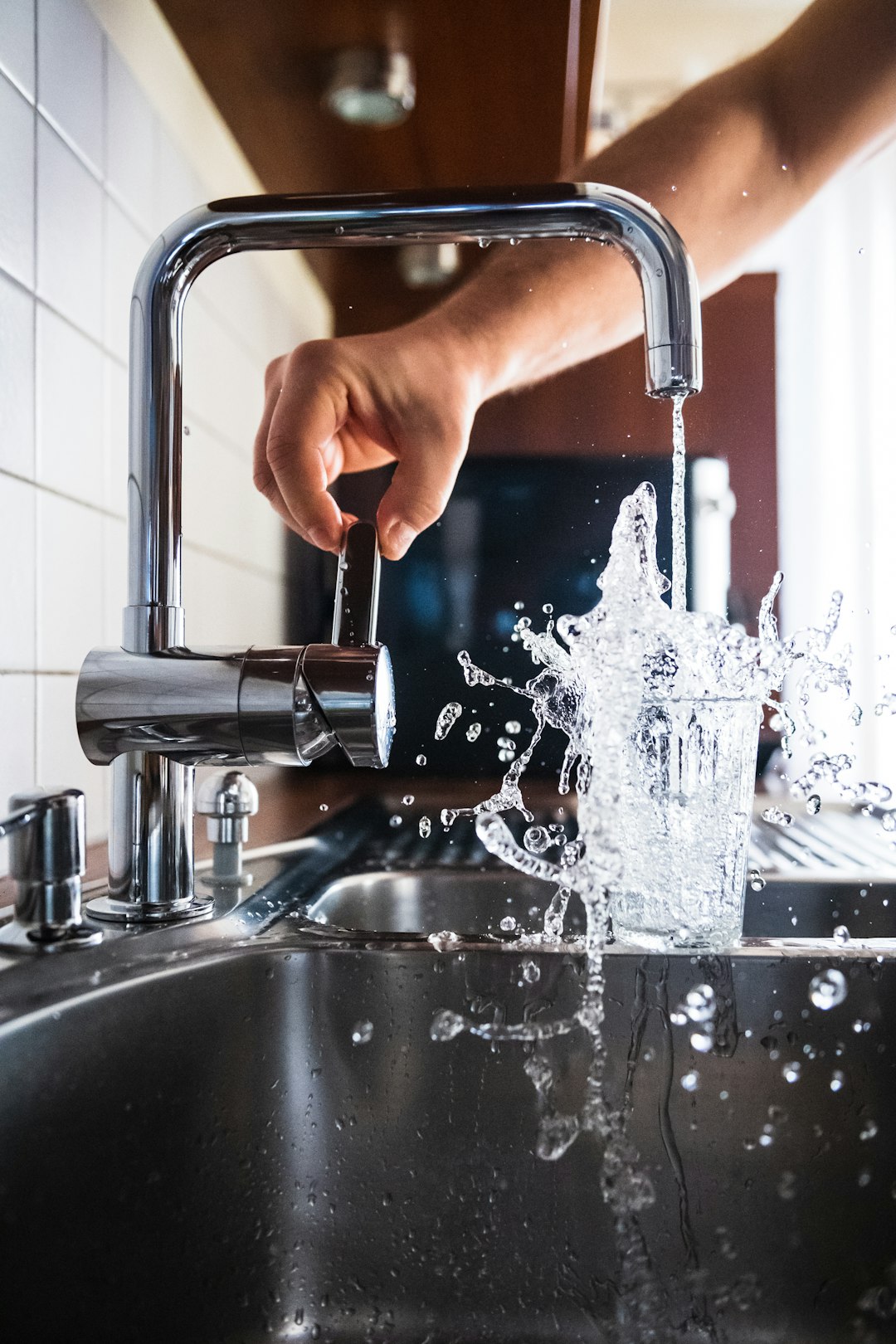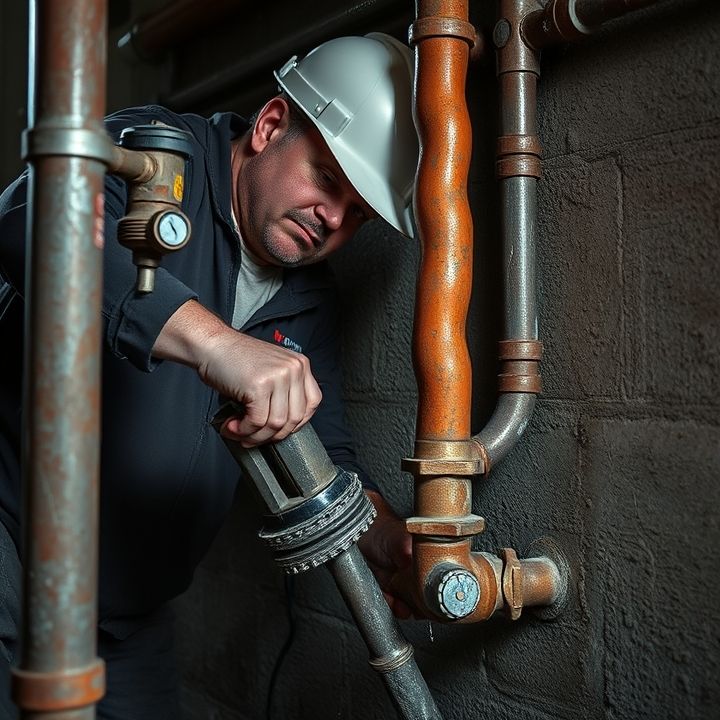Table of Contents
- Introduction
- Identify the type of plumbing emergency
- Shut off the main water supply
- Assess the extent of the damage
- Call a plumbing emergency service for immediate help
- Document the issue for your records and insurance
- Avoid DIY solutions unless you’re experienced
- Understand potential costs associated with repairs
- Follow up with routine maintenance and inspections
- Conclusion
- Frequently Asked Questions
Introduction
Imagine waking up to find water gushing from under your sink or waking up to a bathroom that has turned into a mini swimming pool. Plumbing emergencies can strike at the most unexpected times, and they often bring with them chaos and stress. Understanding how to manage these situations effectively can save you time, money, and a whole lot of frustration. In this essential guide, we’ll walk you through the immediate steps you need to take when faced with a plumbing crisis, from identifying the problem to executing a temporary fix while waiting for a professional.
Whether it’s a minor leak or a major pipe burst, knowing your way around the basics can mean the difference between a simple fix and a catastrophic disaster. Grab your tools, and let’s get ready to tackle those unexpected plumbing problems with confidence!
Identify the type of plumbing emergency
In a plumbing emergency, the first step is to identify the type of issue you are facing. Common plumbing emergencies include burst pipes, overflowing toilets, and major leaks. A burst pipe often results in significant water damage and should be addressed immediately. If you find water gushing from a pipe, it is crucial to shut off the main water supply to prevent further flooding.
Another common issue is a clogged toilet, which can lead to overflow and mess. If this occurs, you can try using a plunger or a toilet auger to resolve the blockage. However, if the toilet continues to overflow, it is advisable to turn off the water supply to the toilet and seek professional help.
Major leaks can occur from various sources, such as under sinks or in walls. To identify the leak, look for signs like water pooling, dampness, or unusual water bills. If you cannot locate the source, it’s essential to contact a plumber as soon as possible to avoid extensive damage.
Shut off the main water supply
In a plumbing emergency, one of the first and most crucial steps is to shut off the main water supply. This action helps prevent further water damage to your property and minimizes the risk of flooding. The main water shut-off valve is typically located near where the water line enters your home, often in the basement, crawl space, or near the foundation wall. It can be a round wheel or a lever that you can turn clockwise or pull up to close.
Before shutting off the main supply, it is wise to locate the valve ahead of time, so you can act quickly in an emergency. Additionally, it is beneficial to inform all household members about its location and how to operate it. Once the water is shut off, you can assess the situation more effectively, whether it’s a burst pipe, overflowing toilet, or another issue. Remember to consider shutting off the electrical supply to avoid any hazards, especially if water is present near electrical outlets or appliances.
Assess the extent of the damage
In a plumbing emergency, the first critical step is to assess the extent of the damage. Begin by identifying the source of the problem, whether it’s a burst pipe, a clogged drain, or a malfunctioning appliance. Look for visible signs of water leakage, such as damp spots on walls or ceilings, pooling water, or water stains. This initial assessment will help you gauge how serious the issue is and determine what immediate actions are needed.
Once you locate the source, turn off the water supply to prevent further damage. Most homes have shut-off valves for individual fixtures, as well as a main shut-off valve that controls the entire water supply. After stopping the water flow, inspect the area for any structural damage or potential hazards, such as exposed electrical wires or mold growth. If the situation appears severe or you are unsure, it is advisable to contact a professional plumber. Keeping a calm demeanor and being proactive in assessing the damage can significantly mitigate the impact of the plumbing emergency.
Call a plumbing emergency service for immediate help
In a plumbing emergency, the first and most crucial step is to call a plumbing emergency service for immediate help. Time is of the essence when it comes to plumbing issues, as even a small leak can lead to significant water damage and costly repairs if not addressed promptly. Emergency plumbing services are available 24/7, ensuring that you can get expert assistance at any time of day or night.
When you contact an emergency plumber, be prepared to describe the nature of the problem clearly. This includes specifying if there is a burst pipe, severe leak, or blockage that is causing backups. Providing details such as the location of the issue and any attempts you have made to resolve it can help the technician understand the urgency of the situation.
Additionally, it’s advisable to temporarily shut off the water supply to limit any further damage until the plumber arrives. Remember, professional emergency services are equipped with the right tools and expertise to handle a variety of plumbing crises effectively, ensuring your home is back to normal as quickly as possible.
Document the issue for your records and insurance
In the event of a plumbing emergency, it is essential to document the issue for both your records and your insurance claims. Start by taking clear photographs of the affected areas, including any visible damage, leaks, or standing water. Make sure to capture multiple angles to provide a comprehensive view of the situation. Alongside photographs, note the date and time when the emergency occurred, as this information can be crucial for insurance purposes.
Additionally, keep a written record of any conversations with your insurance agent or plumbing professional. This documentation can include details such as the name of the person you spoke with, the time of the conversation, and any recommendations they provided. Such records not only help in making the claims process smoother but also serve as a reference for any follow-up actions.
Furthermore, maintaining a detailed log of any repairs made, including receipts and invoices, is vital. This documentation can aid in establishing the cost of damages and repairs, ensuring you receive adequate compensation from your insurance provider.
Avoid DIY solutions unless you’re experienced
In a plumbing emergency, it is crucial to approach the situation with caution. While the idea of tackling the issue yourself may seem tempting, especially to save on costs, avoiding DIY solutions unless you are experienced is highly advisable. Plumbing systems can be complex, and improper handling can lead to greater damage and more expensive repairs. For instance, a simple leak might escalate into a major flooding issue if not addressed correctly.
Additionally, plumbing requires specific knowledge about pipe systems, fixtures, and tools. Without proper expertise, an amateur attempt can cause additional problems that may complicate the situation further. Certain plumbing tasks, such as repairing a broken pipe or clearing a significant blockage, often require specialized tools and techniques that only a professional would possess.
Ultimately, if you are unsure about your ability to handle the situation safely, it is always best to call a qualified plumber. They have the experience and knowledge to resolve plumbing emergencies effectively and efficiently, helping you avoid potential hazards and costly mistakes.
Understand potential costs associated with repairs
Understanding the potential costs associated with plumbing repairs is crucial for homeowners, especially during emergencies. Plumbing issues can arise unexpectedly, leading to various levels of urgency that may influence repair costs. Typically, fees can include service charges, hourly labor rates, and the cost of replacement parts.
On average, homeowners may pay anywhere from $100 to $150 per hour for a plumber’s labor. This can increase if the emergency occurs during off-hours or weekends. Additionally, the complexity of the issue can significantly affect the total cost. For instance, a simple leak might cost less than a complete pipe replacement, which can run into several hundred or even thousands of dollars.
It’s also wise to inquire about the plumber’s pricing structure, including any guarantees on parts or labor. Understanding these potential costs in advance allows homeowners to budget effectively and make informed decisions during high-stress situations.
Follow up with routine maintenance and inspections
After addressing any plumbing emergency, it is crucial to follow up with routine maintenance and inspections to ensure that similar issues do not arise in the future. Regular inspections can help identify potential problems before they escalate, saving both time and money in repairs. Homeowners should schedule annual plumbing check-ups with licensed professionals who can assess the integrity of pipes, fixtures, and drains.
In addition to professional inspections, homeowners can take proactive measures by regularly checking their plumbing systems. This includes monitoring water pressure, examining for leaks, and ensuring proper drainage. Routine maintenance might also involve cleaning out debris from gutters and downspouts, which can prevent water from seeping into the home.
Another essential aspect of maintenance is to familiarize oneself with the main shut-off valve. Knowing how to quickly turn off the water supply in case of an emergency can prevent extensive damage. By incorporating these practices into a regular maintenance routine, homeowners can maintain the functionality of their plumbing systems and enhance the longevity of their fixtures.
Conclusion
In conclusion, handling a plumbing emergency effectively requires quick identification of the issue, immediate action to curb damage, and professional assistance to ensure a lasting solution. Always remember to shut off the main water supply and assess the extent of the damage before reaching out for help. Documenting the situation diligently can aid in insurance claims and facilitate further repairs. While tackling minor issues may seem tempting, it’s crucial to understand your limits and seek qualified plumbers for complicated scenarios. This approach not only prevents escalating problems but also promotes a more efficient resolution. Regular maintenance checks will keep your plumbing system in optimal condition and mitigate future emergencies. Should you ever find yourself overwhelmed by a plumbing crisis, don’t hesitate to reach out for help. For fast and reliable plumbing assistance, call 573-555-2121 today to ensure your home remains safe and damage-free.

